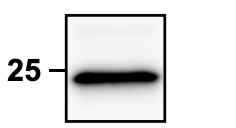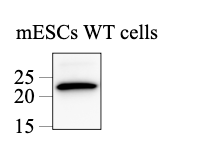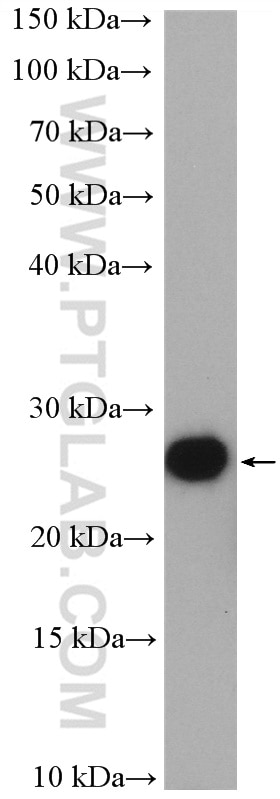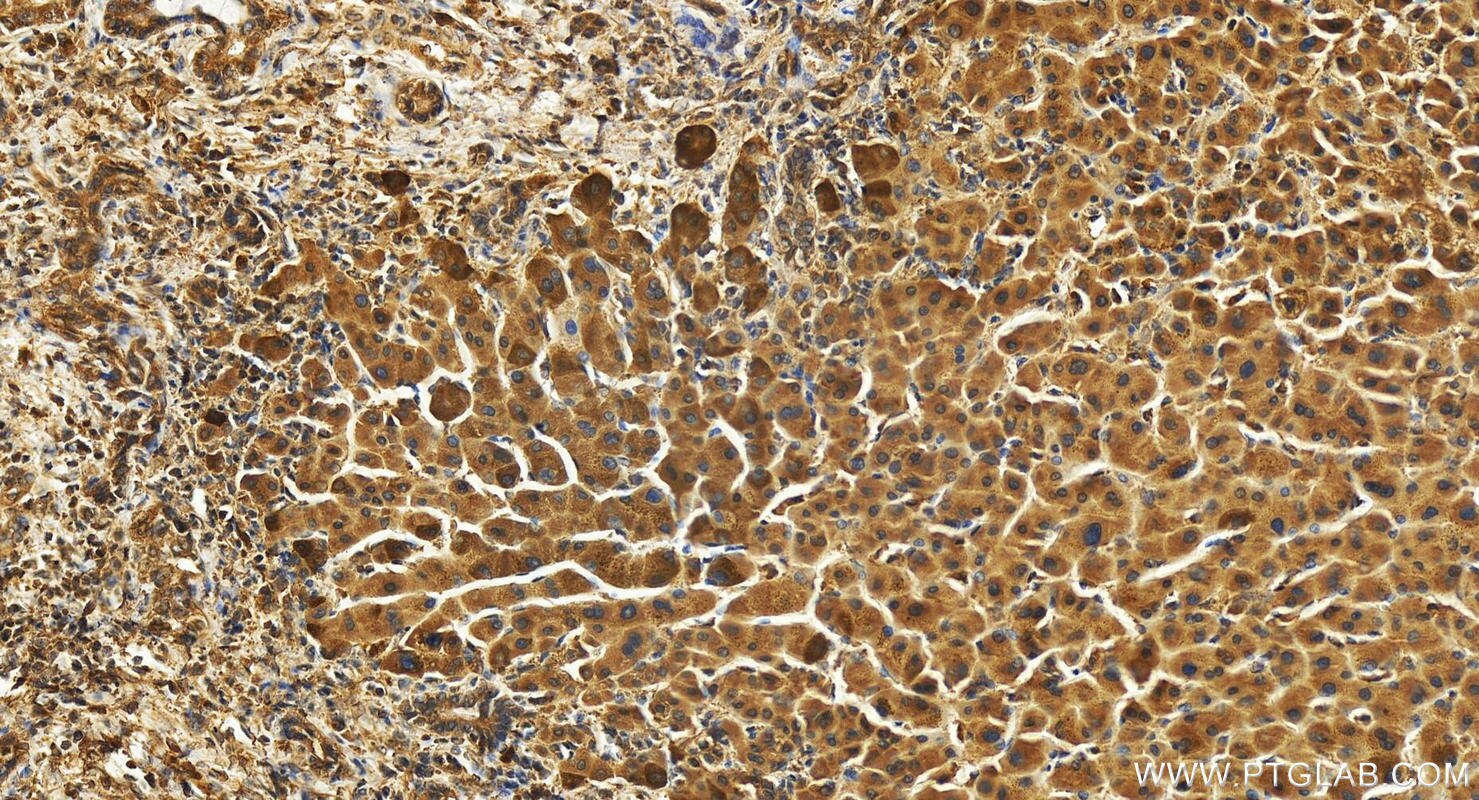Anticorps Polyclonal de lapin anti-TTDN1
TTDN1 Polyclonal Antibody for WB, IHC, ELISA
Hôte / Isotype
Lapin / IgG
Réactivité testée
Humain, rat, souris
Applications
WB, IHC, ELISA
Conjugaison
Non conjugué
N° de cat : 25410-1-AP
Synonymes
Galerie de données de validation
Applications testées
| Résultats positifs en WB | cellules NIH/3T3, |
| Résultats positifs en IHC | human intrahepatic cholangiocarcinoma tissue, il est suggéré de démasquer l'antigène avec un tampon de TE buffer pH 9.0; (*) À défaut, 'le démasquage de l'antigène peut être 'effectué avec un tampon citrate pH 6,0. |
Dilution recommandée
| Application | Dilution |
|---|---|
| Western Blot (WB) | WB : 1:200-1:1000 |
| Immunohistochimie (IHC) | IHC : 1:50-1:500 |
| It is recommended that this reagent should be titrated in each testing system to obtain optimal results. | |
| Sample-dependent, check data in validation data gallery | |
Informations sur le produit
25410-1-AP cible TTDN1 dans les applications de WB, IHC, ELISA et montre une réactivité avec des échantillons Humain, rat, souris
| Réactivité | Humain, rat, souris |
| Hôte / Isotype | Lapin / IgG |
| Clonalité | Polyclonal |
| Type | Anticorps |
| Immunogène | TTDN1 Protéine recombinante Ag22094 |
| Nom complet | chromosome 7 open reading frame 11 |
| Masse moléculaire calculée | 179 aa, 19 kDa |
| Poids moléculaire observé | 23 kDa |
| Numéro d’acquisition GenBank | BC026265 |
| Symbole du gène | TTDN1 |
| Identification du gène (NCBI) | 136647 |
| Conjugaison | Non conjugué |
| Forme | Liquide |
| Méthode de purification | Purification par affinité contre l'antigène |
| Tampon de stockage | PBS with 0.02% sodium azide and 50% glycerol |
| Conditions de stockage | Stocker à -20°C. Stable pendant un an après l'expédition. L'aliquotage n'est pas nécessaire pour le stockage à -20oC Les 20ul contiennent 0,1% de BSA. |
Informations générales
TTDN1 colocalizes with Plk1 at the centrosome in mitosis and the midbody during cytokinesis. It is phosphorylated by Cdk1 in mitosis, and this is required for its interaction with Plk1. Overexpression of TTDN1 or its knockdown by siRNA causes multi-polar spindles and multiple nuclei, suggesting that TTDN1 plays a role in regulating mitosis and cytokinesis. Mutations in the TTDN1 gene are associated with a distinct trichothiodystrophy phenotype. (PMID:17310276, 25290684)
Protocole
| Product Specific Protocols | |
|---|---|
| WB protocol for TTDN1 antibody 25410-1-AP | Download protocol |
| IHC protocol for TTDN1 antibody 25410-1-AP | Download protocol |
| Standard Protocols | |
|---|---|
| Click here to view our Standard Protocols |
Avis
The reviews below have been submitted by verified Proteintech customers who received an incentive for providing their feedback.
FH Aleksandr (Verified Customer) (07-19-2025) | Antibodies were used for Ttdn1 detection in RKO cells! Incubation overnight at 4C
 |
FH Moritz (Verified Customer) (08-20-2024) | I used this antibody to detect MPLKIP/TTDN1 with Western blot in HEK293T WT cell lysate, which worked perfectly.
 |
FH Tsimafei (Verified Customer) (08-12-2024) | Antibody detect a band in the range between 20-25 kDa
 |



